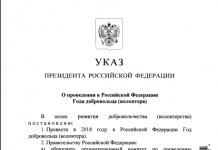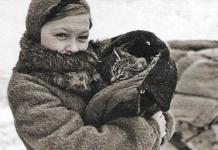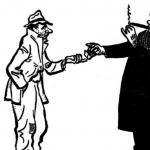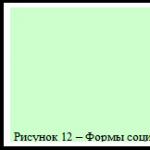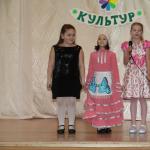I walk slowly along Nevsky Prospekt, with Palace Square ahead. The eye catches the inscription on one of the buildings: “During shelling, this side of the street is the most dangerous.” Today is November 20, 2011, I remind myself, and a feeling of security envelops me in a warm cloud... And on the same day in 1941, the fifth reduction in food standards on cards was made in Leningrad: 250 grams of bread per work card, 125 grams for employees, children and dependent From that day on, a period of hunger blockade began in Leningrad. Norms for troops were also reduced: first-line troops receive 500 grams of bread, rear units - 300 grams... I turn onto Malaya Sadovaya Street and raise my head. Oh! As if alive, two cats are sitting on stands near the windows. These are monuments to the siege cat Elisha and the cat Vasilisa. And today my story is about man’s faithful tailed friends and helpers, who, along with people, endured the horrors of the siege and even managed to be useful. Which one?
Vaska cutlets
[In the bomb shelter. 1941] During the blockade, cats helped many people survive by becoming food for them. Here are some entries from the blockade diaries.
“We had a cat Vaska. Family favorite. In the winter of 1941, his mother took him somewhere and said that he was going to a shelter, saying that they would feed him fish there, but we couldn’t... In the evening, my mother cooked something like cutlets. Then I was surprised: where do we get meat from? I didn’t understand anything... Only later... It turns out that thanks to Vaska we survived that winter..."
“December 3, 1941. Today we ate fried cat. Very tasty” - an entry from the diary of a ten-year-old boy.
“We ate the neighbor’s cat with the entire communal apartment at the beginning of the blockade,” recalls Zoya Kornilieva.
I think I’ve had enough of these memories, I can’t take anymore...
Maybe that’s why there is such a warm attitude towards cats in our city? Have you ever noticed the picture: a cat slowly crosses the store floor, and no one will speed up its movement with a kick or a bag? But with such respect coexists a strange indifference that eats away at our souls like a cancerous tumor: how many stray cats languish on the streets of the city! The lucky ones end up in shelters: “Rzhevka”, tel. 954-50-00; "Lost", tel. 388-95-52. “Lucky” are cats with a difficult fate: some got lost, others were thrown out by their previous owners, someone’s beloved owner died... Help - take the poor fellow home! After all, it’s not a blockade right now, don’t you really have a few drops of milk, a piece of fish, a piece of bread for your cat or kitty...
“When I saw the cat, I realized: we survived”
The year is 1942. There are only a few cats left in Leningrad. Their appearance was perceived by Leningraders as a miracle. This means that not everyone ate their furry pets. Eyewitnesses recall how in the spring of 1942, one old woman, half dead from hunger, took her purr outside for a walk. People came up to her - no, not to take the animal away and eat it - people thanked the grandmother for saving the cat. Another former blockade survivor said that in March 1942 she suddenly saw a skinny cat on a city street. Old women crowded around and crossed themselves. And the emaciated, skeletal-looking policeman made sure that no one caught or harmed the animal. In April 1942, a twelve-year-old girl, walking past the Barrikada cinema, saw a crowd at the window of one house. People marveled at an extraordinary sight: on a windowsill illuminated by the spring sun, a tabby cat with three kittens lay. “When I saw her, I realized that we had survived,” that girl recalled many years later, having become an adult woman.
Alas, such cases were rare. But the rats, in the absence of cats, felt like masters of the situation: they quickly multiplied and devoured the few supplies that were still left, plundered vegetable gardens, but most terrible of all, they posed the threat of an epidemic. Valentina Osipova, an employee of the Church of St. Seraphim of Sarov in the maximum security colony (Fornosovo), says: “The glass in the house flew out during the bombing, the furniture was long ago heated up. Mom slept on the windowsill - fortunately they were wide, like a bench - covering herself with an umbrella from the rain and wind. One day, someone, having learned that my mother was pregnant with me, gave her a herring - she really wanted salty... At home, my mother put the gift in a secluded corner, hoping to eat it after work. But when I returned in the evening, I found a herring tail and greasy stains on the floor - the rats were feasting. It was a tragedy that only those who lived through the siege will understand.” But there was nowhere to take the cat. And what was there to feed her?
Siege survivor Kira Loginova recalled: “Darkness of rats in long ranks, led by their leaders, moved along the Shlisselburg tract (Obukhovskaya Oborona Ave.) straight to the mill, where they ground flour for the whole city. They shot at the rats, they tried to crush them with tanks, but nothing worked: they climbed up and safely rode on in tanks. This was an organized, intelligent and cruel enemy...” Another siege survivor told with horror how one night she looked out the window, and the whole street was swarming with rats. After that she could not sleep for a long time. When rats crossed the road, even trams were forced to stop.
The only way to escape the rat invasion was cats. And in April 1943, after the blockade was broken, the chairman of the Leningrad City Council signed a decree on the need to “extract four wagons of smoky cats from the Yaroslavl region and deliver them to Leningrad.” Smoky Yaroslavl cats were considered the best rat catchers. Eyewitnesses said that long lines lined up for them, like for bread. And in the blockade diary of the writer Leonid Panteleev for January 1944 there is an interesting entry: “A kitten in Leningrad costs 500 rubles.” For example: a kilogram of bread from hand cost 50 rubles at that time; The watchman's salary was 120 rubles. Zoya Kornilieva said: “For a cat they gave the most expensive thing we had - bread. I myself kept a little from my ration, so that later I could give this bread for a kitten to the woman whose cat had given birth.”
Yaroslavl cats drove rodents away from food warehouses, but the problem was not completely solved. And at the end of the war, another cat mobilization was announced - from Siberia. The “cat call” was a success. In Tyumen alone, 238 cats were collected. The first to be brought was the cat Amur, whose owner wished to “contribute to the fight against the hated enemy.” In total, 5,000 Omsk, Tyumen and Irkutsk cats were brought, which cleared our city of rodents, saving the remains of food supplies for people, and the people themselves from the epidemic.
So the stories of Hermitage workers that the cats guarding the Hermitage treasures from rats and mice are the descendants of the famous Kazan rat catcher Alabrys, who was sent to St. Petersburg by Tsarina Elizabeth herself, is a myth. Yes, this is a well-known story: on October 13, 1745, the Empress ordered the Kazan governor to find 30 of the best cats so that they would tirelessly catch rats in the palace, because cats of the Kazan breed were known as the best mouse and rat catchers. But they were most likely eaten during the blockade...
“We also serve our Motherland”
The siege of Leningrad, closed by German troops, lasted from September 8, 1941 to January 27, 1944. More than a million city residents died. Nowadays, many veterans of the Great Patriotic War live in St. Petersburg, 36,000 were awarded medals “For the Defense of Leningrad”, 155,000 were awarded the badge “Resident of Siege Leningrad”. Were the cats awarded? - Yes. - For what? - For vigilance!
“Let’s go, master, hide...” - this is how the behavior of cats was translated into human language when, during the war, anticipating a raid by German bombers, they raised their fur, hissed, uttered irritated screams and rushed straight to the nearest bomb shelter. The value of their warning was that they knew about the trouble that was about to fall from the sky before the radar installations. There is a well-known story about a red cat who is a “listener.” He once appeared at an anti-aircraft battery near Leningrad, and in order not to eat bread for nothing, he accurately predicted enemy air raids. Moreover, the cat did not react to the approach of Soviet planes - it was his own. The battery command valued the tailed listener for his rare gift and not only placed him on allowance, but assigned a soldier to look after him.
Cats that helped save someone’s life were awarded a medal with the words: “We also serve our Motherland.”
Prepared by Irina RUBTSOVA
Reviews
this is the TRUTH. and then others write with all sorts of “moistures” and even aspire to be folk poets.
I have been working with animals all my life, I know many of their destinies, difficult and happy.
but it’s not enough to be just a cat (I’m talking about a competition) where episodic humanity is revealed.
You need to write in such a way that readers don’t start whining, but so that their throats are twisted with flour and they want to destroy EVIL - WAR - and all kinds of two-legged creatures.
Therefore, I am writing a response: the essay is excellent.
During the hard times of war, it was not only people who suffered, but also animals. There are many stories about how they survived the siege of Leningrad.
I want to talk about how an ordinary besieged cat Vasily (or more simply Vaska) not only survived in difficult conditions, but also saved his owners from hunger and cold.
It was an ordinary tabby cat Vaska - there are a dime a dozen of these in any yard. At night, as befits all cats, he wandered around the roofs and basements, and in the morning he made his way through the open window into the house, where he slept well until his next adventures.
Everything changed in the fall of '41.
The familiar window was suddenly tightly closed, sealed crosswise with paper and covered with thick black cloth. For some reason, my favorite bowl turned out to be empty, and my familiar yard “girlfriends” began to slowly disappear. With his inner instinct, Vasily realized that it was no longer worth going out into the street.
But the path to the basement was open; you could sneak there unnoticed. Therefore, every night the cat went hunting for mice and rats.
Some people tried to catch him, but Vaska was cunning and evasive. The mice that he successfully caught he ate himself, and he carried the crushed rats home to his three housewives: his grandmother, her daughter and the little girl. Either he wanted to show off his successful catch, or just to help and feed him somehow.
The women cooked rat soup and divided it among all family members, including Vaska. Then the grandmother took the breadwinner in her arms, stroked him for a long time and whispered the most affectionate words in his ear. At night, everyone went to bed together, and the cat Vasily nestled next to the little girl and warmed her with the warmth of his little body.
With his cat-like instincts, he anticipated the bombing of the besieged city; long before the raid he was nervous and fussed. Then the hostess collected her things, took Vaska in her arms, and they went down to the bomb shelter before anyone else.

When spring came, birds appeared and Vaska and his grandmother began to appear in the yard. She sprinkled the saved bread crumbs on the ground, where a flock of sparrows flew. The cat chose the most impudent and courageous sparrow, and then rushed at him, extending his claws. True, he no longer had enough strength - he could only press the bird to the ground. But then the grandmother came to the rescue and took away the caught prey.
The caught sparrows were boiled to the bones and divided fairly among four. This is how the siege cat Vasily helped his grandmother, daughter and granddaughter survive the most difficult times.
When there were no problems with food, the grandmother still gave the best piece to Vaska, the breadwinner and savior.
But a cat's life is short-lived, and when Vaska died of old age, his grandmother, against the rules, buried him in a human cemetery. She placed a small but real slab on the grave, where she wrote: “Vasily is buried here...” and then added her last name.
Monument dedicated to cat from besieged Leningrad, appeared on Composers Street in St. Petersburg.
In the Vyborg district of the Northern capital, on Composer Street, in the courtyard of house No. 4, a new small monument was erected. It depicts a small figurine of a cat sitting on a chair and basking under a floor lamp.


This touching sculpture is a symbol of the hearth and was created in honor of the cats of besieged Leningrad. The author of the project is Natalya Ryseva, head of the ACC art casting studio.
St. Petersburg residents living in the building on Kompozitorov Street supported the initiative and are grateful to the studio for having a new “neighbor.” As it turned out, the HOA had long been planning to decorate its yard with small architectural forms with landscaping, so Natalya Ryseva’s idea turned out to be very timely.
Historical reference. Cats and besieged Leningrad
In 1941, a terrible famine began in besieged Leningrad. There was nothing to eat. In winter, dogs and cats began to disappear from the streets of the city - they were eaten. When there was absolutely nothing left to eat, the only chance to survive was to eat your pet.
When all the cats disappeared from Leningrad at the beginning of 1943, rats multiplied catastrophically in the city. They simply thrived, feeding on the corpses that lay in the streets. The streets were literally swarming with them. In addition to all this, rats also spread dangerous diseases.
Then, shortly after breaking the blockade, in April 1943, four wagons of smoky cats were brought to Leningrad from Yaroslavl. It was smoky cats that were considered the best rat catchers.

Some of the cats were released right there at the station, and some were distributed to residents. Eyewitnesses say that when the meowing rat catchers were brought in, you had to stand in line to get the cat. They were snapped up instantly, and many didn’t have enough. A kitten in a besieged city cost 500 rubles. For comparison, a kilogram of bread was sold for 50 rubles. Yaroslavl cats saved the city from rats, but could not solve the problem completely.
At the end of the war, a second echelon of cats was brought to Leningrad. This time they were recruited in Siberia. Many owners personally brought their cats to the collection point to contribute to helping Leningrad residents. Five thousand cats came from Omsk, Tyumen and Irkutsk to Leningrad. This time all the rats were destroyed.
“My grandmother always said that my mother, and I, her daughter, survived the severe blockade and hunger only thanks to our cat Vaska. If not for this red-haired hooligan, my daughter and I would have died of hunger like many others.
Every day Vaska went hunting and brought back mice or even a big fat rat. Grandma gutted the mice and cooked them into stew. And the rat made good goulash.
At the same time, the cat always sat nearby and waited for food, and at night all three lay under one blanket and it warmed them with its warmth.
He felt the bombing much earlier than the air raid alert was announced, he began to spin around and meow pitifully, his grandmother managed to collect her things, water, mother, cat and run out of the house. When they fled to the shelter, he was dragged along with them as a family member and watched so that he would not be carried away and eaten.
The hunger was terrible. Vaska was hungry like everyone else and skinny. All winter until spring, my grandmother collected crumbs for the birds, and in the spring she and her cat went hunting. Grandma sprinkled crumbs and sat with Vaska in ambush; his jump was always surprisingly accurate and fast. Vaska was starving with us and he did not have enough strength to hold the bird. He grabbed the bird, and his grandmother ran out of the bushes and helped him. So from spring to autumn they also ate birds.
When the blockade was lifted and more food appeared, and even then after the war, the grandmother always gave the best piece to the cat. She stroked him affectionately, saying - you are our breadwinner.
Vaska died in 1949, his grandmother buried him in the cemetery, and so that the grave would not be trampled, she put a cross and wrote Vasily Bugrov. Then my mother put my grandmother next to the cat, and then I buried my mother there too. So all three lie behind the same fence, as they once did under the same blanket during the war."
Monuments to Leningrad cats
On Malaya Sadovaya Street, which is located in the historical center of St. Petersburg, there are two small, inconspicuous, at first glance, monuments: cat Elisha and cat Vasilisa. Guests of the city, walking along Malaya Sadovaya, will not even notice them, admiring the architecture of the Eliseevsky store, the fountain with a granite ball and the composition “street photographer with a bulldog,” but observant travelers can easily find them.

The cat Vasilisa is located on the cornice of the second floor of house No. 3 on Malaya Sadovaya. Small and graceful, with her front paw slightly bent and her tail raised, she looks up coquettishly. Opposite her, on the corner of house number 8, the cat Elisha sits importantly, watching the people walking below. Elisha appeared here on January 25, and Vasilisa on April 1, 2000. The author of the idea is the historian Sergei Lebedev, who is already known to St. Petersburg residents for his interesting monuments to the Lamplighter and the Bunny. The sculptor Vladimir Petrovichev was commissioned to cast the cats in bronze.

Petersburgers have several versions of the “settlement” of cats on Malaya Sadovaya. Some believe that Elisha and Vasilisa are the next characters to decorate St. Petersburg. More thoughtful city dwellers see cats as a symbol of gratitude to these animals as human companions since time immemorial.

However, the most plausible and dramatic version is closely related to the history of the city. During the siege of Leningrad, not a single cat remained in the besieged city, which led to an invasion of rats that ate the last food supplies. Cats, which were brought from Yaroslavl especially for this purpose, were assigned to fight pests. The “Meowing Division” coped with its task.
(function(w, d, n, s, t) ( w[n] = w[n] || ; w[n].push(function() ( Ya.Context.AdvManager.render(( blockId: "R-A -143470-6", renderTo: "yandex_rtb_R-A-143470-6", async: true )); )); t = d.getElementsByTagName("script"); s = d.createElement("script"); s .type = "text/javascript"; s.src = "//an.yandex.ru/system/context.js"; s.async = true; , this.document, "yandexContextAsyncCallbacks");
On September 8, 1941, the blockade ring closed around Leningrad. The only connecting thread with the mainland remained, passing through Lake Ladoga. Soon famine began in the city.
In the terrible cold and hungry winter of 1941-42, often the only way to survive was to eat your pet.
We had a cat Vaska. Family favorite. In the winter of 1941, his mother took him away somewhere. She said that they would feed him fish at the shelter, but we couldn’t... In the evening, my mother cooked something like cutlets. Then I was surprised, where do we get meat from? I didn’t understand anything... Only later... It turns out that thanks to Vaska we survived that winter...
We ate the neighbor's cat with the entire communal apartment at the beginning of the blockade.
There were other cases, for example, the story of the legendary cat Maxim, about whom the whole city knew. He died of old age in 1957 at the age of 20:
It got to the point in our family that my uncle demanded Maxim’s cat to be eaten almost every day. When my mother and I left home, we locked Maxim in a small room. We also had a parrot named Jacques. In good times, our Jaconya sang and talked. And then he got all skinny from hunger and became quiet. The few sunflower seeds that we exchanged for daddy’s gun soon ran out, and our Jacques was doomed. The cat Maxim also barely wandered - his fur came out in clumps, his claws could not be removed, he even stopped meowing, begging for food. One day Max managed to get into Jacone's cage. At any other time there would have been drama. And this is what we saw when we returned home! The bird and the cat were sleeping in a cold room, huddled together. This had such an effect on my uncle that he stopped trying to kill the cat...
Alas, the parrot died of starvation a few days after this event.
The besieged city was overrun by rats. They fed on the corpses of people on the streets and made their way into apartments. They soon became a real disaster. In addition, rats are carriers of diseases. There were so many of them that even special teams were created to exterminate rodents. They were crushed by tanks, they were shot at - it was useless.
And then, in April 1943, a decree was issued signed by the chairman of the Leningrad City Council on the need to “extract smoky cats from the Yaroslavl region and deliver them to Leningrad.” Smoky cats were considered the best rat catchers. Four carriages of cats arrived in Leningrad, and a huge line immediately formed behind them. In January 1944, a kitten in Leningrad cost 500 rubles (for comparison, a kilogram of bread could be bought for 50 rubles). But, most importantly, the city was saved, the rats retreated.
The cats of besieged Leningrad made their small contribution to the Victory. After the end of the war, more cats were brought to the city for the needs of the Hermitage - to catch rats. But that's a completely different story...
On January 25, 2000, on Malaya Sadovaya Street, on the building of the Eliseevsky store, a figurine of Elisha the cat was installed. And on April 1, 2000, an elegant cat Vasilisa appeared on the eaves of the house opposite - a monument to Yaroslavl cats. Soon, cute figurines of rat catchers became heroes of urban folklore. It is believed that if the tossed coin remains on the pedestal, the wish will come true. And the cat Elisha, in addition, helps students not leave their tails during the session.
© Website, 2009-2019. Copying and reprinting of any materials and photographs from the website in electronic publications and printed publications is prohibited.

